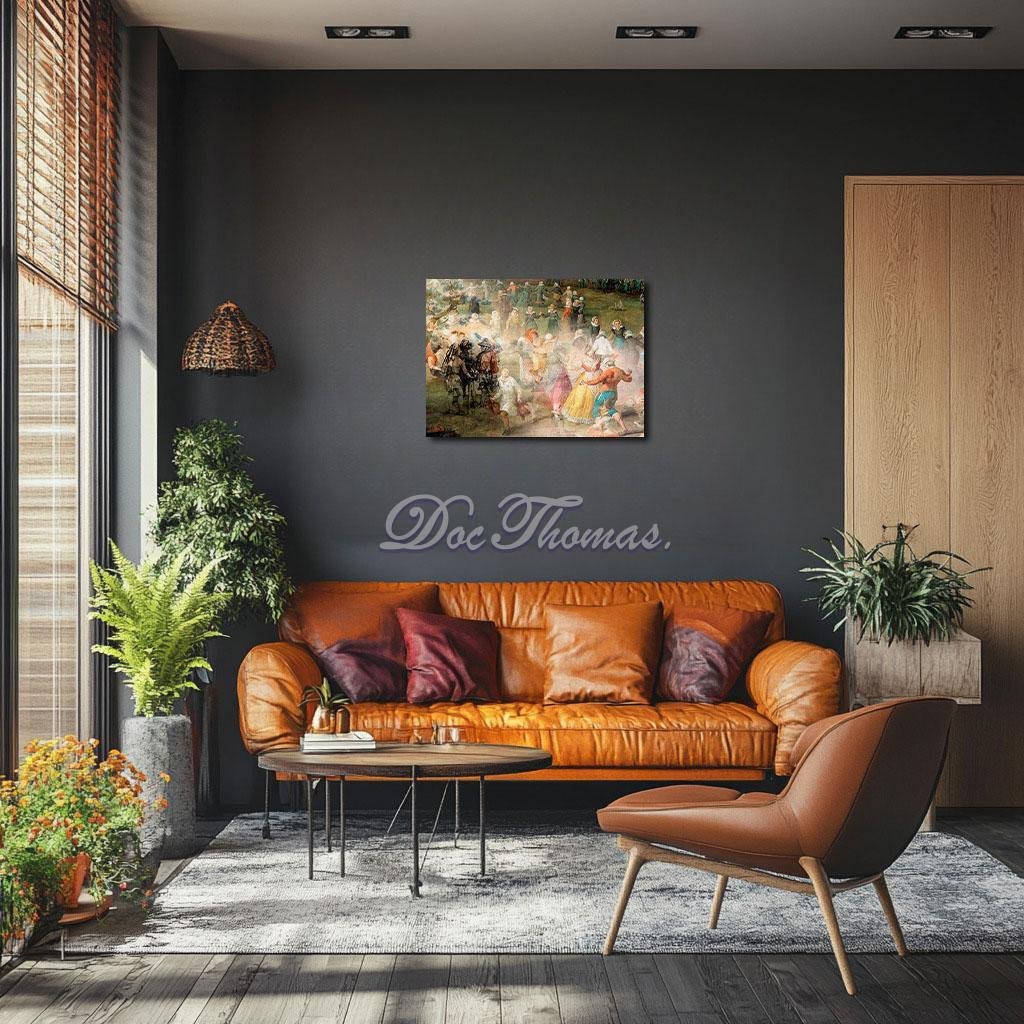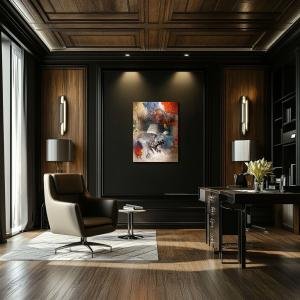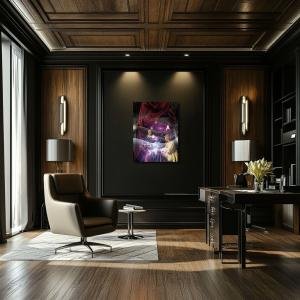Veins of Porcelain: Sonata in a Shattered
Veins of Porcelain: Sonata in a Shattered Room reframes Vermeer’s Girl Interrupted at Her Music into a spectral cascade of echoing sound and fragmented time. Women unfold like symphonies, music notes wrap into gowns and walls, and the interruption becomes an eternity. Blending warm Vermeerian golds with spectral violets, ink blacks, and parchment whites, the piece suggests a silent sonata built of longing, memory, and unheard voices. It is not music we hear—it is what we’ve always felt but couldn’t name. This is the moment where composition fractures into dream.
Please see Below for Details…
Hotline Order:
Mon - Fri: 07AM - 06PM
404-872-4663
Veins of Porcelain: Sonata in a Shattered Room is a surreal reimagining of Johannes Vermeer’s Girl Interrupted at Her Music , where sound becomes substance and silence transforms into the weight of memory. In this transformed composition, the intimate domesticity of Vermeer’s original interior shatters into an orchestral hallucination—where sheet music spills like liquid through the architecture, garments become instruments, and gestures dissolve into symphonic echoes. The interruption is no longer a passing moment; it is a permanent fracture—a pause stretching across time, emotion, and identity.
The structure of the room remains, but its solidity is illusion. Wooden beams, light-struck walls, and heavy velvet chairs now drift like sheet music in motion, swirling with clefs and notes that dance in defiance of gravity. Where Vermeer’s girl once delicately plucked harmony into being, now a spectral multitude surrounds her—versions of herself multiplied, aged, remembered. A pianist leans forward, her form stitched into the curved lid of an invisible harpsichord. A standing figure fades into scrolls of music. Another kneels inside the shadowed creases of a skirt that has become a sonata, flaring open like a stage curtain.
The color palette drifts between Vermeer’s earthbound clarity and the iridescent fluidity of dream logic. Golden ochres soften into rose and pearl, echoing parchment and time-stained manuscripts. Deep teal shadows ripple beneath pale amber skin, while black ink trails through folds of ghost-white notation like thought unraveling into the visible. Subtle blushes of coral and cherry pulse near the edges of memory, mimicking the bloom of music across a cheek or collarbone. The pale blue of Vermeer’s classic Delft palette reappears in the folds of garments and paper, cooling the scene with a breeze of forgotten presence. A gentle, spectral lavender washes over the entire image, merging sorrow with stillness.
The figures, while borrowed from Vermeer’s brush, are reassembled into new choreographies. Their gazes are no longer directed at one another but suspended in contemplation, as if each were hearing the same music at a different moment in their lives. The interruption becomes a symbol of longing—for expression, for attention, for autonomy. The women are not merely musicians but melodies themselves, unfolding and incomplete.
As the artist, I imagined this scene as a lament for the silence that surrounds many women's voices—not just in music, but in history, in art, in relationships. Vermeer painted his women with astonishing grace, yet always within boundaries. Here, I sought to let them spill beyond. I asked: What happens when a moment meant to be private becomes eternal? When the pause in a song becomes the whole score? In this surreal reconstruction, music is no longer heard but seen—alive in gowns, shadow, posture, breath.
The floating staves that stretch like vines across the scene represent both confinement and release. They are the bars of the music and the bars of a cage. The female form, often the instrument of art, becomes both conductor and composition. And yet, despite this immersion, there is a sense of something lost—a note not played, a glance not returned, a phrase never completed.
The transformation of the harpsichord’s lid into an angled wing of score-sheet light becomes central—a suggestion of flight or transcendence. The boundary between self and song dissolves here. A pianist’s hair curls into notes, her fingers into strings. Her dress unfurls into a whorl of symphonic measure, expanding across the room like an aria caught mid-breath.
Veins of Porcelain: Sonata in a Shattered Room is not a simple homage—it is a requiem for moments withheld. It is a dreamscape where music does not fade, but reverberates through fabric, bone, and shadow. Vermeer’s still life becomes an echo chamber. Each note is a memory. Each interruption is a beginning.
Add your review
Your email address will not be published. Required fields are marked *
Please login to write review!
Looks like there are no reviews yet.








